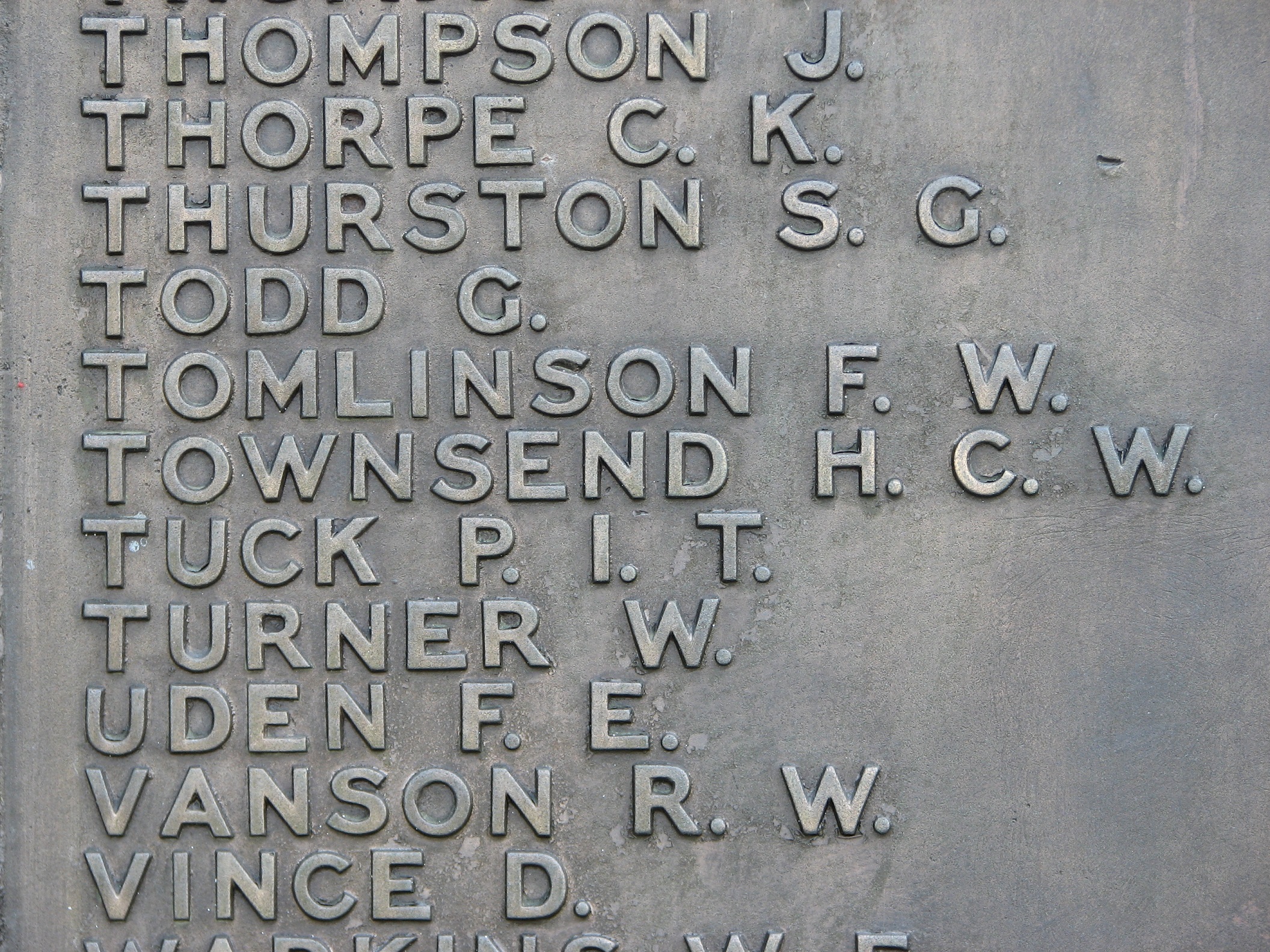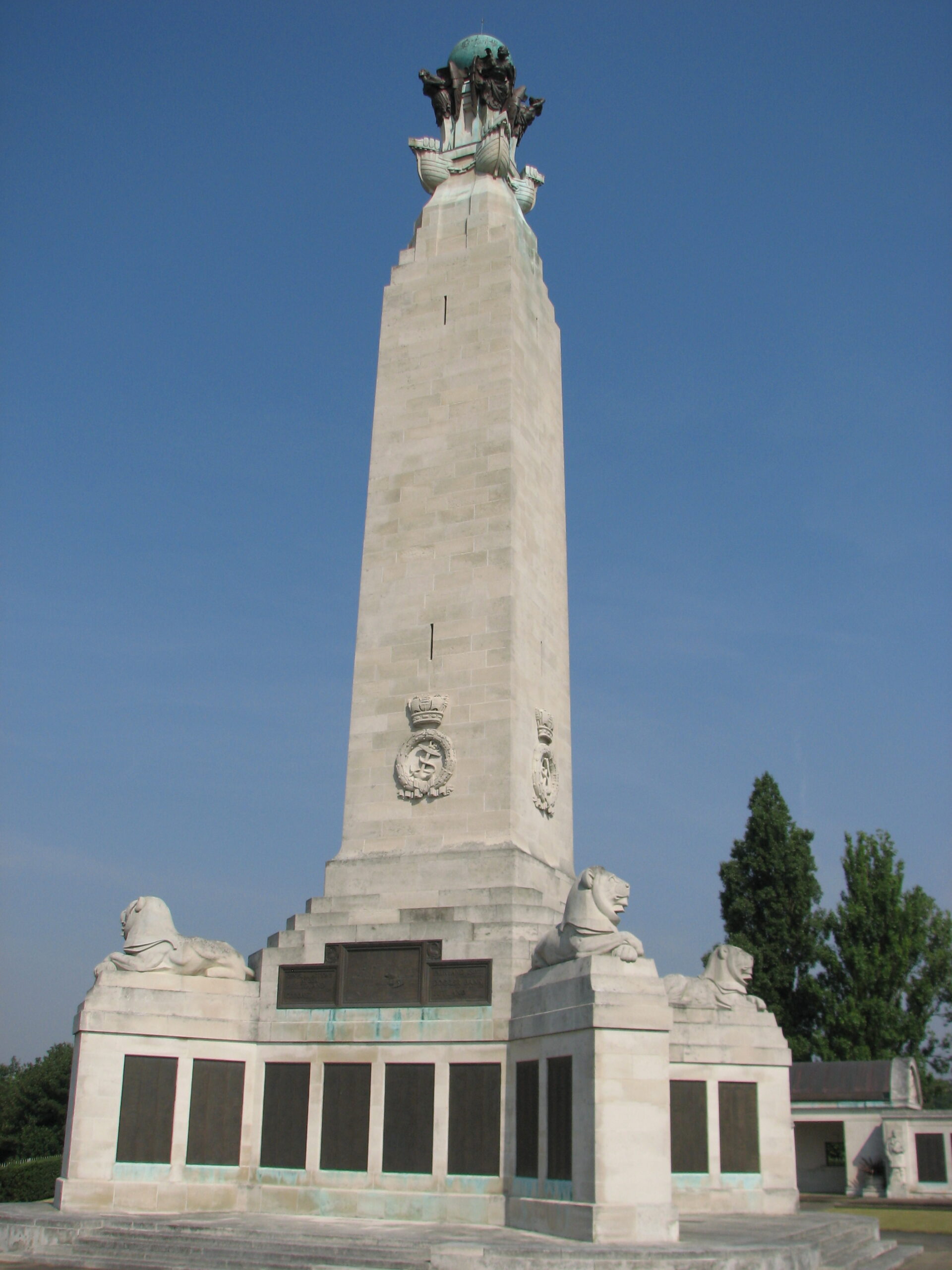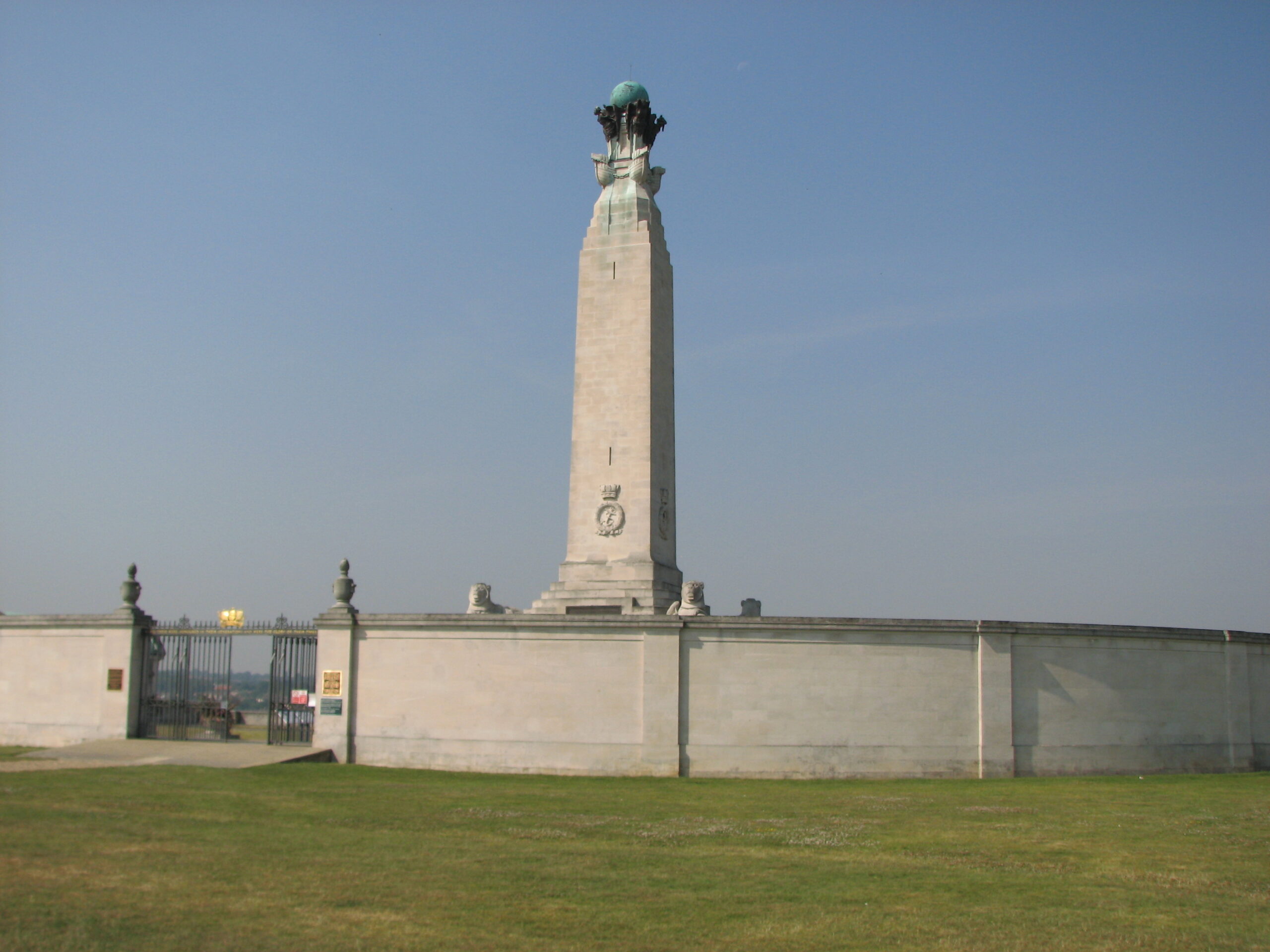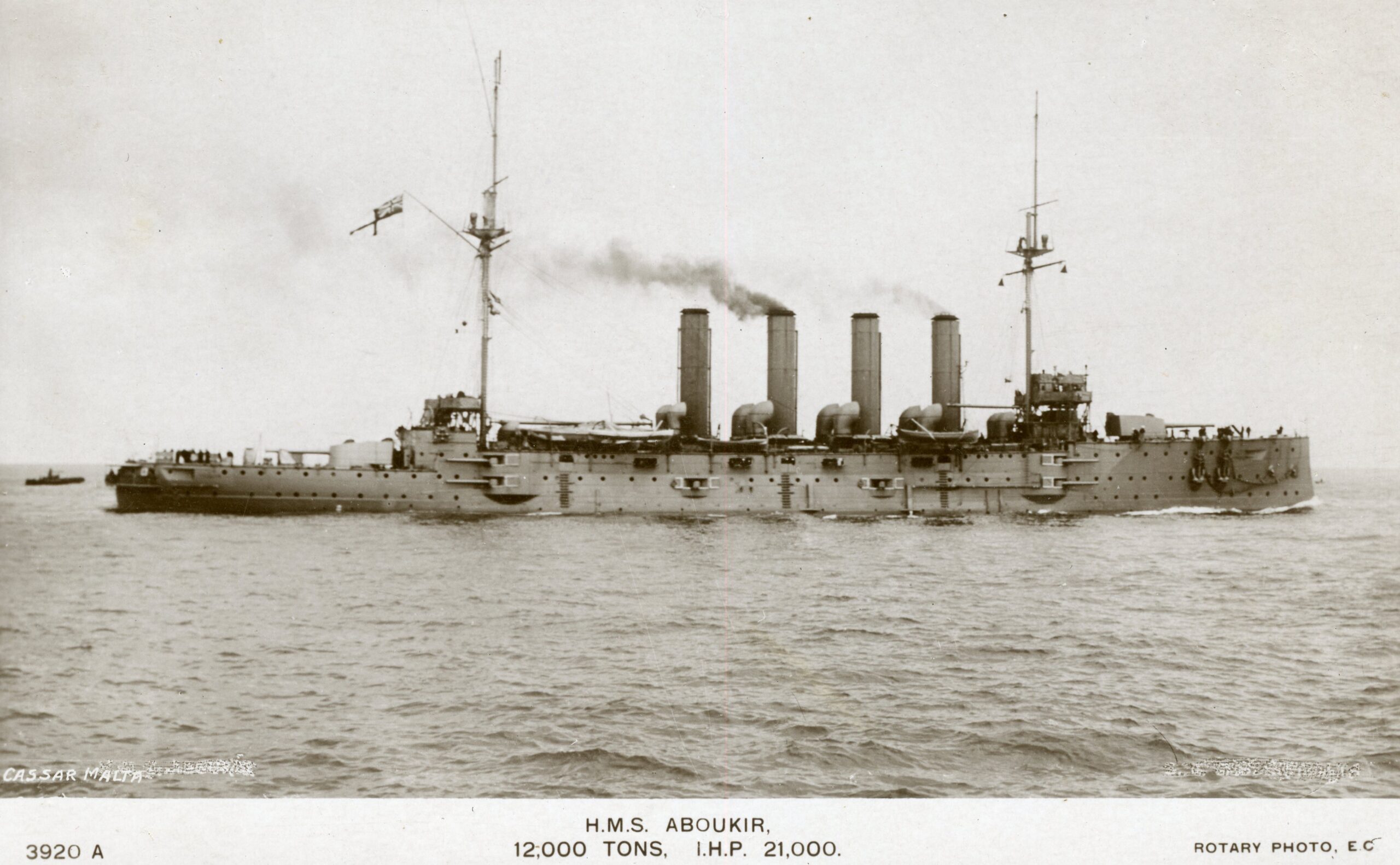Henry Townsend (1891 - 1914)
The first of the East Bergholt men to die in the Great War. Charles joined the Royal Navy as a Boy Seaman and mainly served on Cruisers. He was killed when his ship HMS Aboukir, was sunk by a German U-Boat, less than two months after the outbreak of war.
- 63
- Died in the Great War
- 51.968855, 1.024083
Details
| Name: | Henry Charles William Townsend |
| Service: | Royal Navy |
| Ship: | H.M.S. Aboukir |
| Service Number: | 239251 |
| Rank: | Able Seaman |
| Date of Death: | 22nd September 1914 |
| Age: | 23 |
| Commemorated: | Panel 3, Chatham Naval Memorial, Chatham, Kent |
Family Background and Early Life
Henry – or Charles as he was known to his family – was born on 11th April 1891 close to Panfield Farm, in the village of Panfield, near Braintree in Essex. His father, Henry Townsend was an Agricultural Labourer, originally from Finchingfield in Essex, who had married Alice Cathcart from Bocking in 1883. Henry and Alice had three children together, Emily (born in 1885), Charles and Elijah (born 1897).
The family moved to Penshaw in County Durham during the 1890s where Henry worked as a Groom and a Gardener. In June 1903, they returned to East Anglia and took up residence on White Horse Road in East Bergholt – Henry worked as a Gardener. Charles and his younger brother both attended the village school at Burnt Oak.
Joins the Royal Navy
Charles left school in May 1904, and for a time at least was employed as a Bricklayers Labourer. In August 1907, he joined the Royal Navy as a Boy Seaman, which meant he was committed to a 12 year period of service starting when he was 18.
Initially Charles underwent his training at HMS Ganges, the shore based training establishment situated at Shotley. At the time that Charles joined the facility it had only recently been moved from Harwich. Though primarily a shore based establishment, Ganges also included a small number of ships at anchor in the River Stour.
From Charles’ Service Record, we know that at the time of his 18th birthday he was 5 foot 6 and half inches tall, with dark brown eyes, hazel hair and with a fresh complexion. He also had two tattoos, one of which was a rose on his right wrist.
After nearly a year at Ganges, Charles was posted to his first ship, the armoured cruiser HMS Cressy. During his time in the Royal Navy, Charles served primarily on cruisers, which in addition to the Cressy also included HMS Minerva and HMS Blenheim. These postings meant that he saw service in the West Indies, the Mediterranean and also the English Channel.
Whilst Charles serving on HMS Minerva, the ship took part in the relief operations following the great Sicillian earthquake and tsunami in December 1908. As a result, the crew qualified for the “Medal of Merit for Participation in the Relief of the Earthquake in Calabria and Sicily”, which was instituted by the King of Italy.
HMS Aboukir
At the end of July 1914, during the tense days immediately prior to the outbreak of war, Charles was posted to another cruiser, this time to HMS Aboukir, a sister of his first ship, HMS Cressy. By 1914, despite being less than 15 years old, this class of armoured cruiser were considered obsolete.
HMS Aboukir was to be part of the 7th Cruiser Squadron which along with the Harwich Force (made up of destroyers and submarines), was tasked with patrolling the southern North Sea, to watch against German warships and merchant vessels.
On 19th September 1914, as a result of bad weather, Aboukir along with HMS Cressy and another sister ship HMS Hogue, were left to maintain the watch without any escorting destroyer screen.
The area they were patrolling in – approximately 30 miles west-south-west of the Dutch port of IJmuiden – lay between a known German minefield and the Dutch coast. This meant there was little room for manoeuvre if required.
22nd September 1914
Just before 6.30 on the morning of 22nd September there was an explosion under Aboukir’s starboard side. There was no sign of a submarine, so her Captain thought the explosion had been caused by a mine – in fact, it had been caused by a torpedo. He was in command of the flotilla, and ordered the other two ships to close in to assist with the wounded.
Aboukir quickly developed a list and 25 minutes after the explosion she capsized, floated bottom upwards for several minutes before finally sinking at 6.50. The damage caused by the explosion meant that Aboukir was only able to launch one cutter for those trying to escape the sinking ship.
HMS Hogue had lowered her boats to rescue Aboukir’s survivors and shortly after getting underway again, she was struck by 2 torpedoes. At this point a submarine was seen to surface, and was taken under fire by Hogue. At approximately 7.15 – ten minutes after Hogue had been torpedoed, she sank.
By this time the Cressy had also launched her boats to pick up survivors from the other two ships, when she too was hit by a torpedo near her after funnel. Another submarine conning tower was seen, and Cressy opened fire but then a second torpedo hit her. She turned over and sank at approximately 7.55. 1 The torpedoes had been fired by the German submarine U9, under the command of Kapitanleutnant Otto Weddigen. He returned to Germany and was greeted as a hero.
Over 1,450 sailors died in the sinkings, one of whom was Charles.
The sinkings shocked Britain and the world. Just one month into the War, the reputations of both the British government and the Royal Navy (at that time regarded as the world’s greatest maritime force) were dealt a serious blow.
Charles has no known grave. He is commemorated on the Chatham Naval Memorial in Kent. 2 After the war it was decided that an appropriate way to commemorate those members of the Royal Navy who had no known grave, would be to erect identical memorials in the form of an obelisk in each of the three manning ports in Great Britain – Chatham, Plymouth and Portsmouth. The bronze panels on each memorial contain the names of the men and women from that manning port.
The Chatham Naval Memorial commemorates more than 8,500 servicemen and women from the Great War, and over 10,000 from the Second World War.
Postscript
Shortly after his Charles death, his parents moved away from East Bergholt to Panfield in Essex.
Copyright © Mark Ashmore, 2024
- 63
- Died in the Great War
- 51.968855, 1.024083






